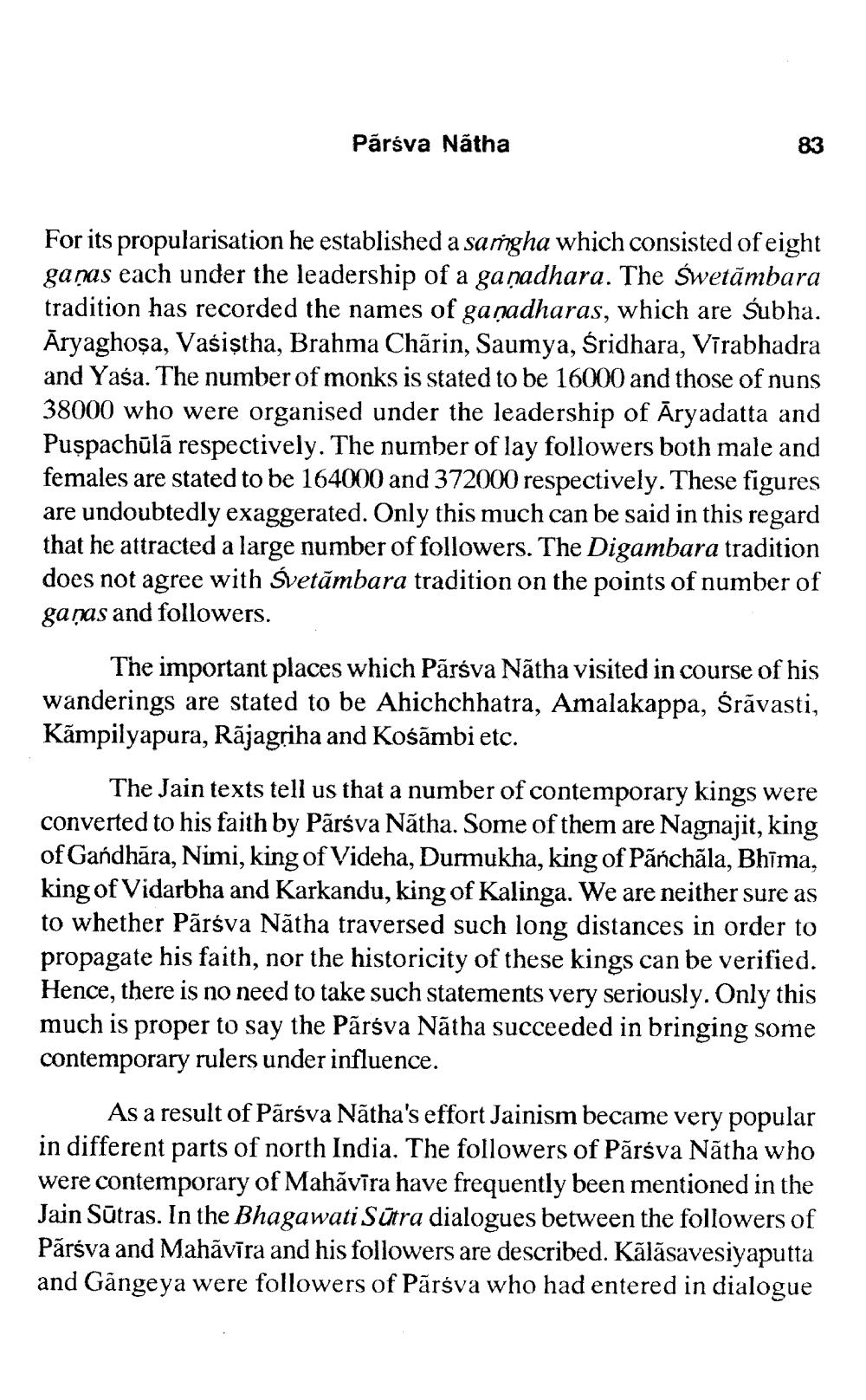________________
Pārsva Nãtha
For its propularisation he established a samgha which consisted of eight gamas each under the leadership of a ganadhara. The Swetămbara tradition has recorded the names of gañadharas, which are śubha. Āryaghoşa, Vašiştha, Brahma Chãrin, Saumya, Sridhara, Virabhadra and Yasa. The number of monks is stated to be 16000 and those of nuns 38000 who were organised under the leadership of Āryadatta and Puspachūlā respectively. The number of lay followers both male and females are stated to be 164000 and 372000 respectively. These figures are undoubtedly exaggerated. Only this much can be said in this regard that he attracted a large number of followers. The Digambara tradition does not agree with Svetămbara tradition on the points of number of gamas and followers.
The important places which Páráva Nãtha visited in course of his wanderings are stated to be Ahichchhatra, Amalakappa, Śrāvasti, Kampilyapura, Rājagriha and Kośãmbi etc.
The Jain texts tell us that a number of contemporary kings were converted to his faith by Pãrśva Nátha. Some of them are Nagnajit, king of Gandhāra, Nimi, king of Videha, Durmukha, king of Pāńchāla, Bhīma, king of Vidarbha and Karkandu, king of Kalinga. We are neither sure as to whether Pāráva Nãtha traversed such long distances in order to propagate his faith, nor the historicity of these kings can be verified. Hence, there is no need to take such statements very seriously. Only this much is proper to say the Pãrýva Nātha succeeded in bringing some contemporary rulers under influence.
As a result of Pārśva Nãtha's effort Jainism became very popular in different parts of north India. The followers of Păráva Nátha who were contemporary of Mahāvīra have frequently been mentioned in the Jain Sūtras. In the Bhagawati Sūtra dialogues between the followers of Pārśva and Mahāvīra and his followers are described. Kālāsavesiyaputta and Gãngeya were followers of Pārśva who had entered in dialogue




